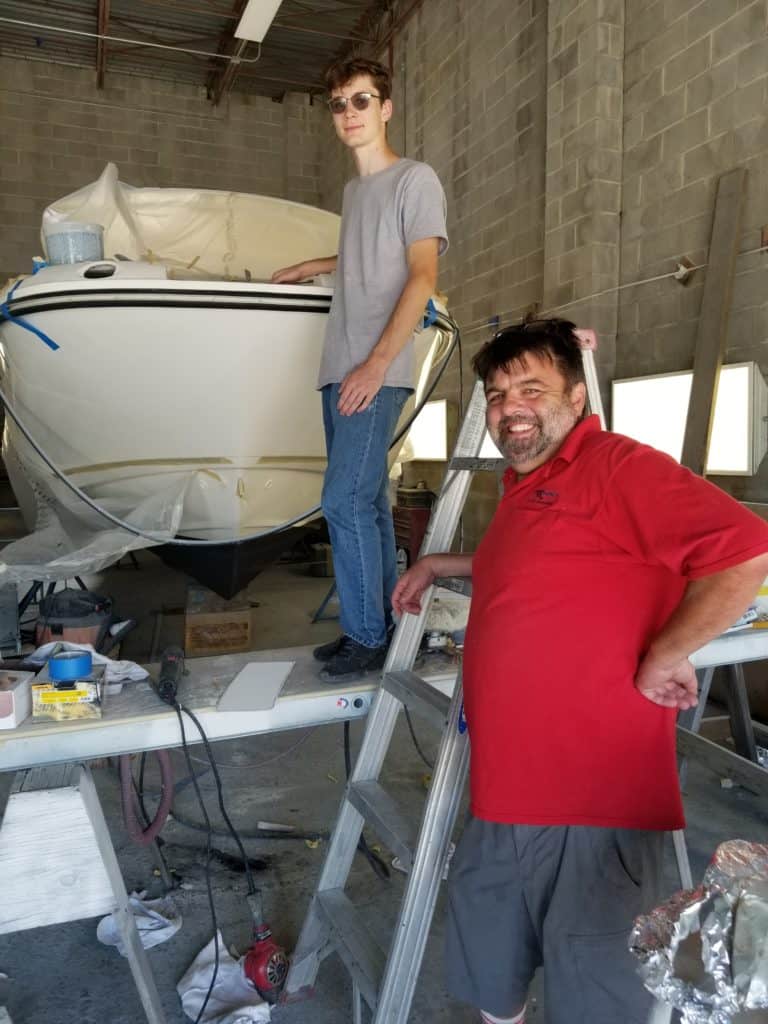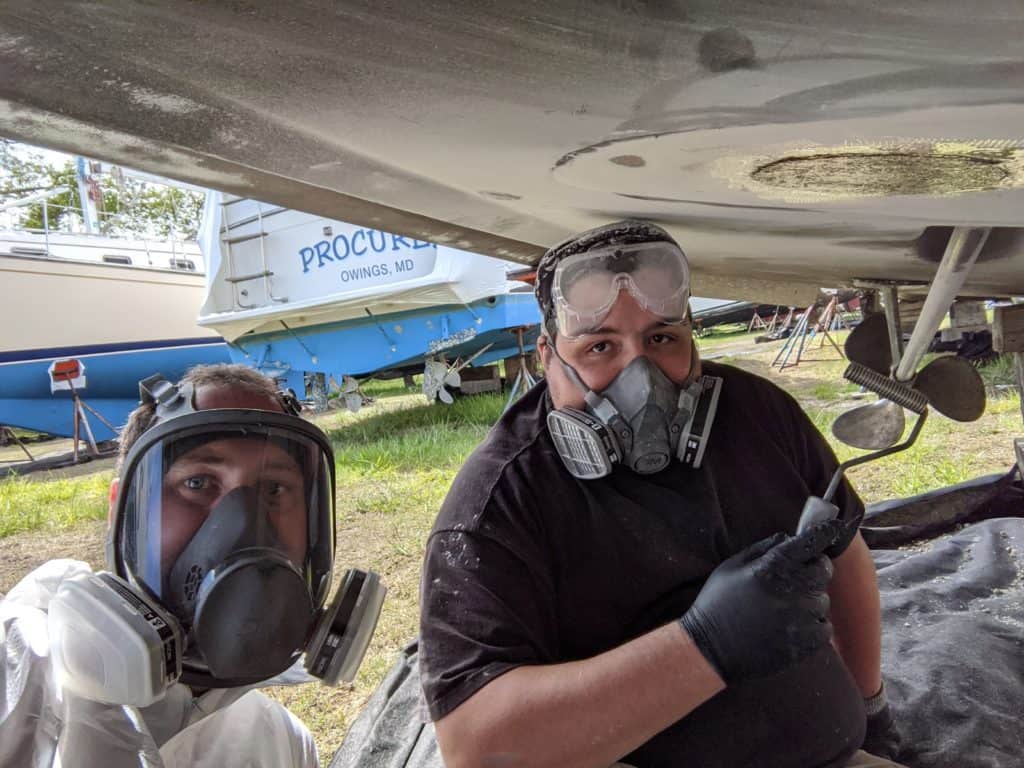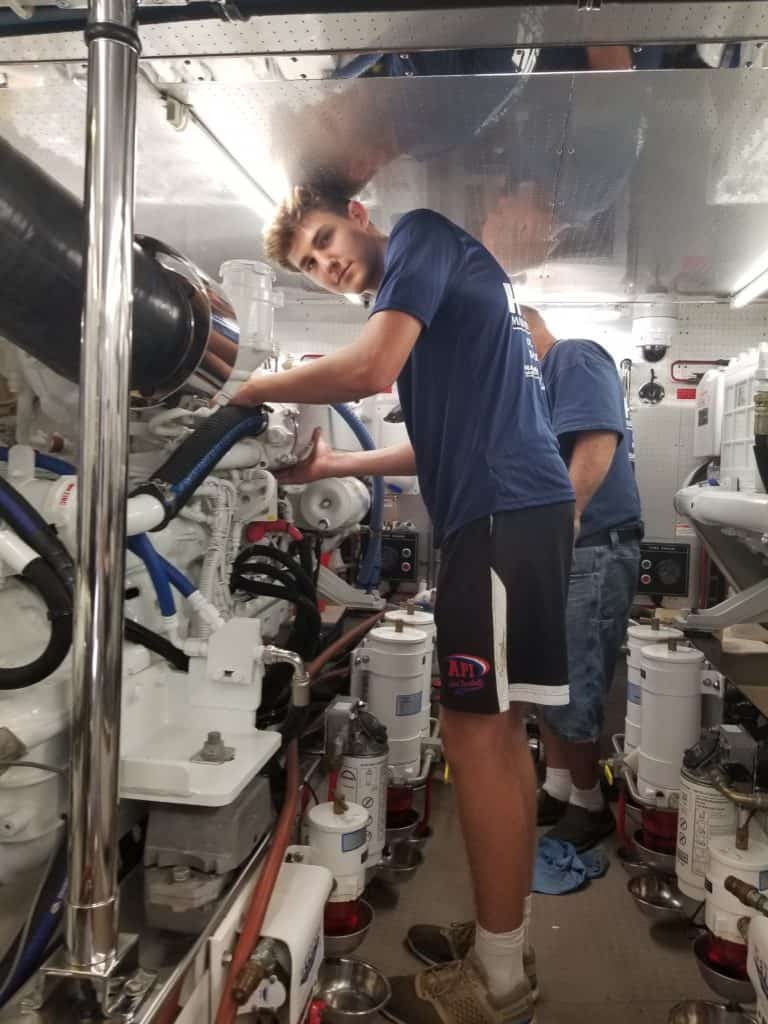A New Work Force
Cultivating Careers in Bay Country
By Steve Adams
Growing up, many of us heard what’s become a seemingly universal national narrative: going to college is the best way to land a well-paying career and achieve professional success.
We heard it from our parents, teachers, and leaders; national and state public policies encourage it; and as long as you’re willing to accept decades of debt, loan-making banks make it possible even for those who can’t afford the cost of tuition.
In reality, it’s not just going to college, but actually graduating, that matters—something that less than 40 percent of students attending four-year for-profit schools and two-year community colleges do within six years of enrollment, according to the National Student Clearinghouse Research Center.
In other words, roughly six out of ten students who invest their time and money in these schools do not come away with the earning power or economic return they expected to gain.
Add to this the wrench that COVID-19 has thrown into the complexities of higher education, along with its effects on various job markets, and there may be no better time for young people to consider alternatives to college that can also lead to a satisfying career.
In the Chesapeake Bay region, there is a notable shortage of qualified trade workers, so the industries that rely on those workers are making job training more accessible than ever. One program founded right here on the Maryland waterfront connects prospective employees directly to businesses for on-the-job training. Read on…
Boating Jobs Abound
There are 170,365 registered boats in Maryland. The National Marine Manufacturers Association reports that in 2018, 1,121 businesses and 17,793 marine trade employees worked on boats in our state, adding up to an economic impact of $3.5 billion. That includes manufacturers, suppliers, sales, services, boating activities, and tax revenue. It’s a booming business that needs fresh hands and minds to keep it afloat.
To help support demand and help young people consider the careers involved, the Marine Trades Association of Maryland (MTAM) established the Marine Trades Industry Partnership for JOBS Today program (MTIP) in 2014. Funding comes from grants through Maryland’s Employment Advancement Right Now program, a workforce development initiative administered by the Maryland Department of Labor.
“Most boatyards used to be mom-and-pop businesses staffed by a single mechanic and a single bookkeeper,” says Susan Zellers, MTAM’s executive director. “But we’re a far cry from that now, and boaters’ demand for marinas and boatyards that offer very specific services—and, in turn, employers’ demand for employees—inspired us to create a program that produces ready-to-hire workers with the specialized knowledge, skills, and abilities that modern boats’ materials and mechanics require.”
In contrast to the classroom lectures in many general workforce development programs, MTIP recruits and matches applicants (primarily 18- to 24-year-olds) with employer-partners who have a position to fill for six weeks of paid on-the-job training in a specific skill or skillset such as marine electrical, engine repair, or marine systems. Upon completion, the employer may decide the trainee is a good fit and offer him or her a full-time job if a vacancy exists. Over 50 percent of participants are offered employment by the end of the program.
Though Zellers says raising awareness of the program amid well-funded college marketing campaigns is an ever-present challenge, the program has been a resounding success.
Over 400 individuals have applied since 2014, and the number of employers involved has grown from 18 to 82 with the roster including boatbuilders and dealers, harbors and marinas, boating instructors, media and more, stretching from Solomons to North East.
“The marine industry is huge in Maryland and requires a variety of different skills to support it,” says Rob Sola of Diversified Marine Services, an MTAM board member. “The demand for service currently exceeds the capacity, so we regularly need to bring in more talent at all levels of experience. Plus, young people typically bring great enthusiasm and a hunger to learn, which is a great fit for our team.”
Wendy Madden, HR manager at M Yacht Services agrees. “Our business was growing and, after finding there was a shortage of skilled labor in the area, I started looking for an organization that was focused on… training young people to create a bigger pool of skilled technicians and craftsmen,” she says. “Our expert technicians want to pass on their knowledge to the younger generation… It’s important to continue the storied traditions of working on boats on the Bay, not to mention introducing young people to the satisfaction of mastering a craft.”
The program is ideal for people who are “doers,” says Madden. “We should celebrate people who are skilled in working with their hands and who can troubleshoot and fix things. There are so many opportunities available which are rewarding and profitable, particularly in a state like Maryland where the industry is such a vital part of the economy and impacts the daily lives of so many.”
Aidan Kutchi and Christopher Crowe plan to not only become the 79th and 80th program graduates but also receive job offers at the end of their training.
“I’ve always loved working with my hands and feeling accomplished when a task is done,” says Kutchi, who learned about MTIP through the marine service technology program at the Center for Applied Technology South, a vocational center that offers career exploration programs to Anne Arundel County high school students. Kutchi is currently completing his practicum at Diversified Marine Services while attending South River High School. “It was really cool to me to be able to do what I enjoyed doing in school, but with professionals, and not be stuck behind a desk or in a building. I enjoy being able to feel the breeze off the water and see the beautiful scenery while working.”
“My favorite part of it has been the hands-on experience and learning from individuals that really do this work for a living as opposed to classroom simulations,” echoes Crowe, who’s midway through his practicum at Washburn’s Boat Yard. “There doesn’t seem to be any shortage of different forms of work in this field, so I plan to continue my education and work in it for years to come.”
Even those who do plan to attend college find benefits in the program. Andrew Piatek, a Southern High student, completed his practicum at Osprey Marine Composites. “My favorite part of the program was coming to work and learning something new about fiberglass work and the marine industry as a whole every day,” he says. “I’m positive that my experience will help me achieve my ultimate goal of obtaining a degree in composite engineering and landing a composite manufacturing job.”
And that’s what MTIP is ultimately all about: helping young people discover, learn, and potentially pursue long-term career opportunities that they may have never dreamed of.
“It’s about changing the tide of young people following their parent’s dreams,” concludes Zellers. “So, while we have a very successful program by the numbers, our real success is growing and celebrating the aptitude that many young people have for working with and solving problems with their hands, helping an essential industry survive, and pushing a community to recognize the importance and value of these jobs.”
Visit www.MTAM.org/career-training to view sample OTJ Practicums or submit your resume.
************************
Jumpstarting Careers
There are plenty of options in the region for those interested in exploring some of the many skilled trades as well. Here are three:
Center for Applied Technology North (Severn)
Built by Anne Arundel County Public Schools in 1974 to prepare students to work in the skilled trades, CAT North offers students from seven feeder high schools the opportunity to experience four career programs (and earn elective credits) each semester through its Career Exploration Program (CEP). Programs run the gamut, with 22 offered in the areas of Arts, Media, and Communication; Construction and Development; Consumer Services, Hospitality, and Tourism; Environmental, Agricultural, and Natural Resources; Health and Biosciences; IT; Manufacturing, Engineering, and Technology; and Transportation Technologies. Following CEP, students can choose to receive further instruction in Level One and Level Two courses, in which they receive an industry-recognized certification (IRC) or licensure, and even pursue internships/work-study at diverse organizations such as the NSA, Coast Guard, Plumbers and Steam Fitters Union, car dealerships, restaurants, and more.
“Our school goal is to prepare every student in our building for their next steps in life, whether it be career or college,” says Principal Joseph Rose. “Many of our students can earn a great living immediately after completing our programs because our local economy has a huge demand for skilled tradespeople, and I truly believe the pendulum has shifted away from college for all.”
Center for Applied Technology South (Edgewater)
Built just three years after CAT North to satisfy demand, CAT South offers students from six feeder high schools 15 programs to experience. Principal Adam Sheinhorn proudly reports that 98 percent of students complete their programs with at least one IRC, and that those who decide to go directly into the workforce have little trouble finding employment opportunities thanks to business partners’ high esteem for CAT South’s training.
“Young people need to have options,” says Sheinhorn. “A two- or four-year degree won’t be everyone’s path, and we help our students discover their passion – and, just as importantly, identify what professions don’t interest them – and leave with the knowledge and training that will make them more prepared to pursue both post-secondary education and the workforce.”
Bausum & Duckett Electric (Edgewater)
A leading full-service electrical contractor that happens to be celebrating its 60th anniversary this year, Bausum & Duckett recruits and provides hands-on training and mentorship to apprentices enrolled in both Association of Builders and Contractors (ABC) and Independent Electrical Contractors (IEC) four-year apprenticeship programs. It hosts a dozen-or-so at a time and has hired hundreds over the course of its partnership with ABC and IEC.
“I can’t overstate the importance of apprenticeship programs,” says co-owner Mark Llewellyn. “They provide us with a steady stream of high-quality employees, and there’s no doubt that graduates advance themselves in the field at a much greater pace in a much shorter time frame. They also highlight the importance of, and great career opportunities available in, the skilled trades.”




